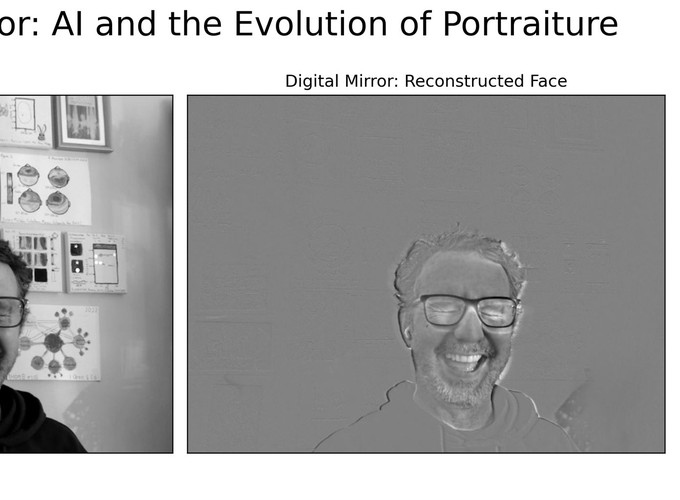At the Dublin Makers stand, I teamed up with artist Cian McLoughlin to explore what happens when art, maths, and neuroscience meet. Together, we looked at how both artists and scientists try to capture the essence of a face.
Cian’s paintings, called “Tronies”, layer multiple portraits of the same person to show just how varied and expressive human faces can be. I linked this to how computers “learn” to recognize faces: by starting with an average face and then spotting the unique details that make each of us different.
It turns out this isn’t far from what our own brains do. We constantly break down and process visual information so we can recognize one another at a glance.
Visitors to the stand had their photos taken from different angles, and we ran them through a computer program that turned their faces into striking, abstract “eigenfaces.” Everyone got to take home their very own digital portrait — a mix of maths, art, and neuroscience, all rolled into one.
Cian is currently the SFI Discover-funded Artist in Residence at the Trinity College Institute of Neuroscience.
🔗
The Digital Mirror: AI and the Evolution of Portraiture
🔗 Dublin Maker 2024


